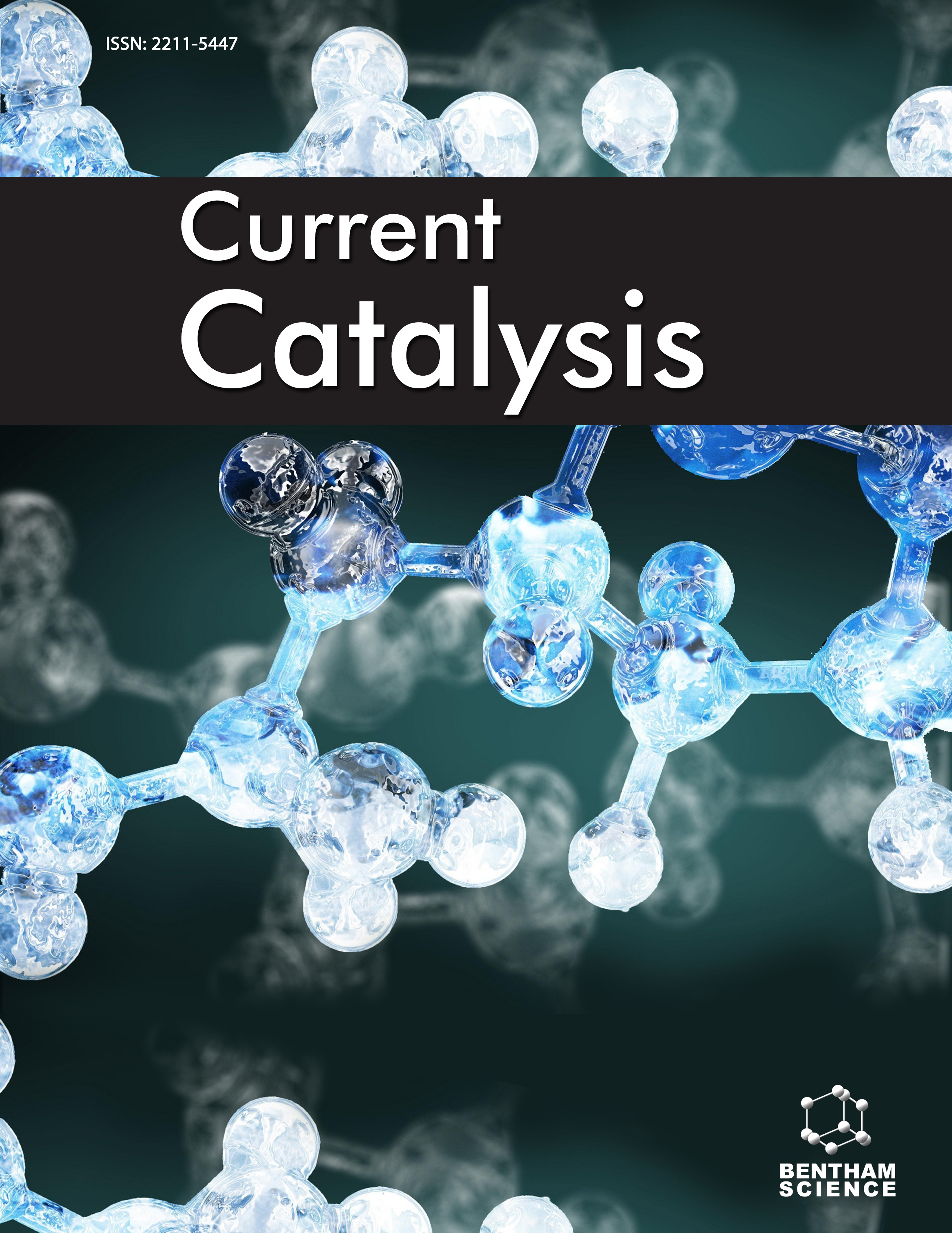- Home
- A-Z Publications
- Current Catalysis
- Previous Issues
- Volume 4, Issue 1, 2015
Current Catalysis - Volume 4, Issue 1, 2015
Volume 4, Issue 1, 2015
-
-
A Selective and Sustainable Sulfoxidation Method Catalyzed by Reusable Manganese (III) Schiff Base Complexes
More LessAuthors: Abdolreza Rezaeifard, Maasoumeh Jafarpour, Reza Haddad and Alireza FarrokhiA novel environmentally benign oxidation method for practical and highly selective production of various sulfoxides using n-Bu4NHSO5 catalyzed by simple tetradentate Schiff base Mn(III)-complexes in ethanol under mild conditions has been developed. The salen catalyst proved to be reusable for at least three times and the oxidant’s by-product (n- Bu4NHSO4) could also be recycled. The efficiency of the catalytic system was in Read More
-
-
-
A Photocatalyzed Synthesis of Dialkyl Carbonates from Phosgene Generated in situ
More LessAuthors: Caroline M. Brooke and Patrick E. HoggardThe anion exchange resin Amberlite IRA-900, in the chloride form, catalyzes the photolysis of carbon tetrachloride in methanol, ethanol, and n-propanol under visible and near-UV irradiation to produce the corresponding dialkyl carbonate and alkyl chloroformate, the latter readily converted to the carbonate with base. For diethyl carbonate, the rate of reaction increases with the partial pressure of oxygen and is relatively inse Read More
-
-
-
Evaluation of Catalytic Activity of Acid Activated Multiwalled Carbon Nanotubes in an Esterification Reaction
More LessAuthors: K.U. Minchitha, M. Rekha, N. Nagaraju and N. KathyayiniMultiwalled carbon nanotubes (MWCNTs) synthesized earlier by catalytic chemical vapor deposition of acetylene, were used to develop heterogeneous supported acid catalysts by sonicating with 50% aqueous solutions of H2SO4, H3BO3 and H3PO4. The effect of acid treatment of MWCNTs, on their textural properties such as crystallinity, surface area, nature of the surface functional groups and elemental compositi Read More
-
-
-
Ideal Hydrocracking Catalysts Based on Microporous Molecular Sieves
More LessAuthors: Yanfei Wang, Zhihua Zhang and Xuli ZhaiHydrocracking catalysts consisting of metal and microporous molecular sieves play an essential role in petroleum industry. This review summarizes the compositions, preparation approaches and applications of hydrocracking catalysts based on molecular sieves. Specifically, this review includes: (i) a brief overview of selected methods of direct synthesis and the post-synthetic modification of molecular sieves; (ii) an introduction of Read More
-
-
-
Synthesis, Spectral and Thermo Analytical Studies of Nickel (II) and Ruthenium (II) Complexes of Schiff Base Ligands for Hydrogenation of Benzene
More LessNovel Nickel(II) and Ruthenium(II) complexes of schiff base ligands were synthesized and studied using various spectral and thermoanalytical techniques. One of the metal complexes [NiII (L-2)2(CH3OH)2] has been structurally characterized on the basis of X-ray data and was found to adopt a helical structure stabilized by strong intermolecular H-bonding to form a dimeric structure. The complex crystallizes in the triclin Read More
-
-
-
The Catalyst-free Addition of Dialkyl Phosphites on the Triple Bond of Alkyl Phenylpropiolates Under Microwave Conditions
More LessAuthors: Erika Balint, Judit Takacs, Maria Balint and Gyorgy KeglevichAs an extension of our earlier study, (E)-alkyl 3- (dialkoxyphosphoryl)-3-phenylacrylates were synthesized by the addition of dialkyl phosphites to the triple bond of alkyl phenylpropiolates under microwave irradiation. The (E)- diastereoselectivity of the monoadducts falls in the range of 84–90%. There was no need to use any catalyst.
-
-
-
An Efficient and Green Catalytic Method for Friedländer Quinoline Synthesis Using Tungstophosphoric Acid Included in a Polymeric Matrix
More LessA new, efficient and green methodology for obtaining quinolines based on the use of tungstophosphoric acid included in a polymeric matrix of polyacrylamide is proposed (APTPOL60). The methodology involves the formation of polysubstituted quinoline compounds using a variety of 2-aminoaryl ketones and β-dicarbonyl compounds, in absolute ethanol as reaction solvent, and a temperature of 78 ºC. The catalyst effici Read More
-
Most Read This Month
Article
content/journals/ccat
Journal
10
5
false
en


